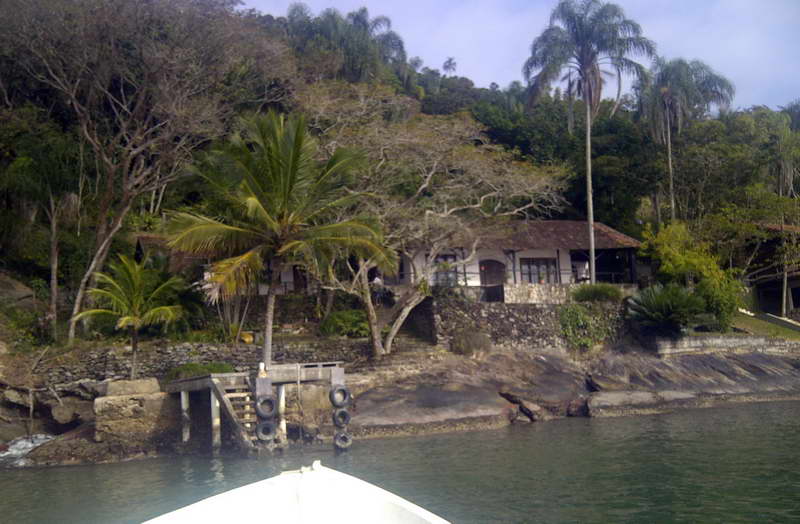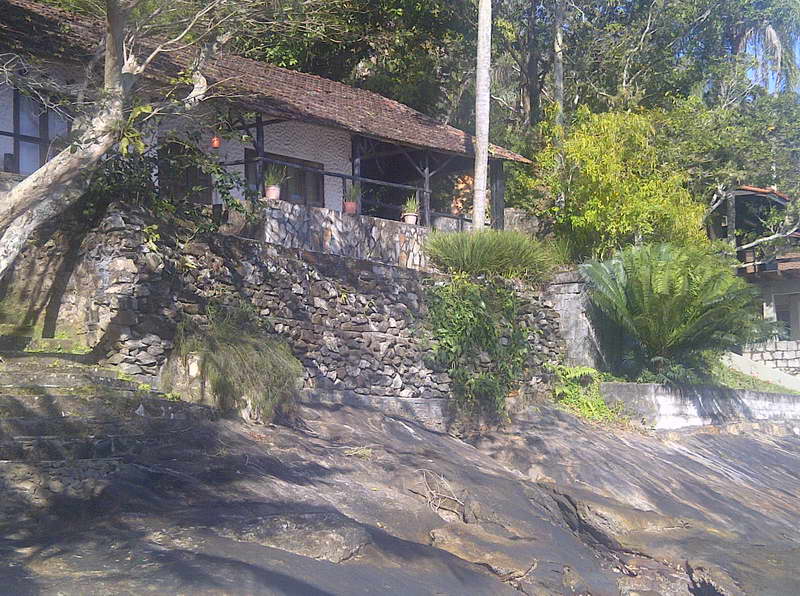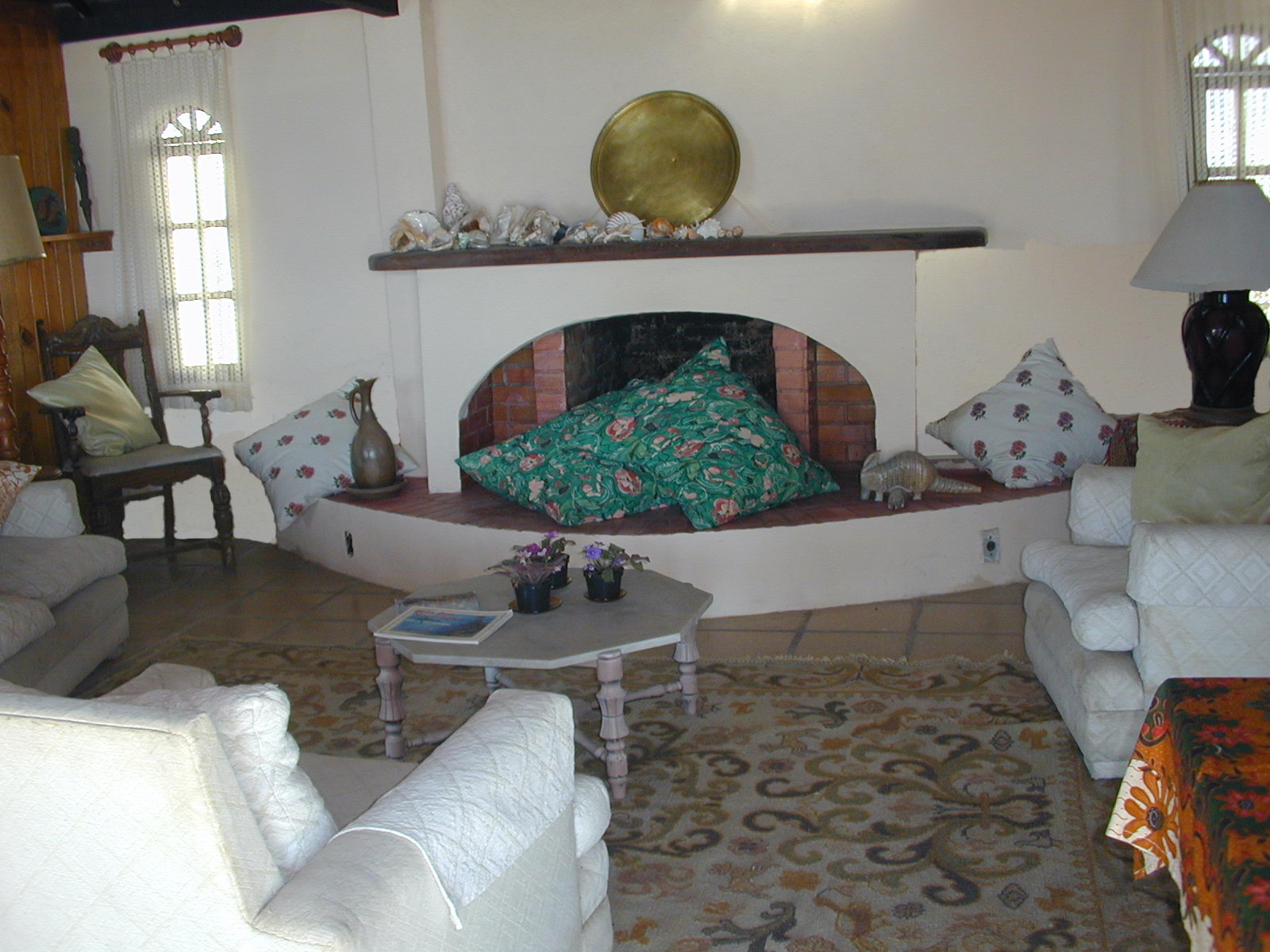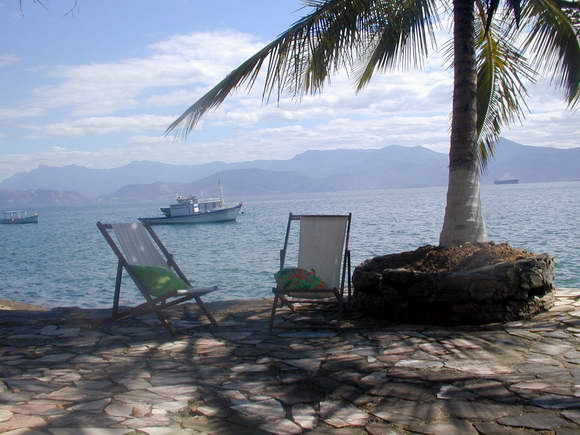
Brazil Water Front Properties
RRF Marketing Holiday Rentals and Sales
Email: info@rrf-marketing.com Tel: +27 33 330 2792

 |
Brazil Water Front PropertiesRRF Marketing Holiday Rentals and Sales Email: info@rrf-marketing.com Tel: +27 33 330 2792 |
 |
Waterfront House On Island
Rio de Janeiro Brazil
contact:
info@rrf-marketing.com Tel +27 3333 02792
Kingfisher Cottage Brasil
Jaguanum Island Brasil

A dream house on the water's edge
The property is situated on the island of Jaguanum in the bay of Sepetiba
(scroll down to view map), approximately 80 kilometres from Rio de Janeiro and
about 4 nautical miles offshore. From the village of Itacuruca, there is
transport available to the island at all times by water taxis and they can be
reached through mobile phone.

The main house and guest cottage are situated on 4,500 square metres of land
with 162 square metres of buildings, 400 metres from the attractive and nearly
deserted beach of Araxa. The main house consists of two bedrooms, bathroom,
sitting/dining room, kitchen , loft and verandahs. The guest cottage has a
double bedroom and bathroom, storeroom/office. The water supply is from a spring
in the mountain behind the house and is stored in 40,000 litre tanks on the
property. Water is heated by electricity or by gas heater. Light is supplied by
municipal main land power.
Caretakers cottage 1 bedroom, bathroom, sitting room kitchen/dining room and
small verandah.

The property is situated on the island of Jaguanum in the bay of Sepetiba,
approximately 80 kilometres from Rio de Janeiro and about 4 nautical miles
offshore. From the village of Itacuruca, there is transport available to the
island at all times by water taxis and they can be reached through mobile phone.

Purchase Price US$155,000
Land Taxes R$375 Aprox Per annum
Utilities R$560 Aprox Per month
The US$ conversion is aprox Real 2.1 = US$ 1 Taxes are BR Reais and are given as
an indication only
JAGUANUM ISLAND
(Contributed by Rosemary Forrester )

The island of Jaguanum in the Bay of Sepetiba, lies 4 nautical miles off the
coast of Rio de Janeiro State some 80 kilometres from the city centre of Rio de
Janeiro. The fishing village of Itacuruca on the Rio/Santos highway is the
access point for transport out to the islands of the region. The names of
Jaguanum and Itacuruca come from the Tupi Indian dialect and mean �Little black
dog� and �Little stones� respectively.
Jaguanum Island is located at Latitude 23.00 south and Longitude 43.56 west
(Kingfisher Cottage) and lies in a north-east/south-west direction, two nautical
miles long and three-quarters of a nautical mile at its widest point. Most of
the island is mountainous and covered in dense Atlantic rain forest with the two
principle peaks measuring 232 and 230 metres high. Several small fishing
villages nestle on the beaches and sheltered bays and an attractive coastal path
links the various communities of an estimated 2,500 inhabitants.
To view some of the birds that can be seen around the houses and gardens, and
along the rocks and beaches refer to the article on Birds of Jaguanum by
Rosemary Forrester.
Travelling in an anti-clockwise direction and starting with the beach of Araxa,
here is a short description of each area.
Araxa:
A lovely beach with many shade trees and a jetty on either side. This was once
the site of the Jaguanum Hotel which no longer operates. Besides the path that
runs around the coastline of the island there is another which crosses over the
mountains and comes out in Praia da Toca. To find the entrance to the path needs
local knowledge. Calhaus is a fishing community on an attractive beach with
large boulders. There is a small bar serving cold beers and the local cane
spirit; a Catholic priest comes from the mainland now and then to say Mass in
the chapel on the rocks in the corner.
Praia do Sul:
A local family runs a fishing cooperative and it is possible to buy fresh fish
when the boats come in. They also have frozen fish and prawns in their freezer
room. Dona Conceicao runs a small bar and simple restaurant under a shady tree
and will cook up something delicious when asked. There is a large jetty and a
nice sandy beach.
Catita: The island school is situated here and takes children to the 8th grade
in the Brazilian education system. Teachers come every day from the mainland and
most children will walk to school though the more distant villages have water
transport for the students. Catita also has the only clinic on the island with a
resident nurse in attendance. A doctor visits once a week from the mainland.
There is another Catholic chapel on this small but pleasant beach.
Lucas: Vagem: Cabacera: Praia da Toca: Guarda
All these small villages lie on the east coast of Jaguanum island and do not
have very good beaches but are on the path around the island. There is a small
bar on Vagem if one needs to quench one�s thirst
Pitangueiras:
A large restaurant is very obvious on this pretty beach and a substantial jetty
makes docking easy.
Calabosa: A private house occupies this tiny public beach.
Estopa:
One of the most popular beaches on the island, many day cruisers and tour
operators stop here for their passengers to have a swim and enjoy the beauty of
the island. Several well-kept private homes are tucked in amongst the trees and
gardens.
The name Estopa comes from the slave trader times when the ships would call in
to wash down their filthy holds and the exhausted slaves after the terrible
Atlantic crossing when so many slaves died. Estopa is the Brazilian name for the
rough jute sack cloth that was used in the general clean-up. There were very
good water sources on this beach with at least three small rivers flowing down
from the mountain.
Many of the slaves were kept on Estopa to recuperate before being transported on
to the mainland and the slave markets of Santa Cruz and Rio de Janeiro. Even
today a faint ring of stones carved in animal and mythological shapes still
exists in a garden behind the beach where the slaves once prayed and worshipped
distant gods left behind in Africa. It was only in 1850 that the slave trade was
abolished.
General information:
It takes between two and three hours to walk around the island, not allowing for
pleasant stops to drink something cool or enjoy a meal. Bird watching is good
with kingfishers, herons, parrots, macaws and parakeets, hawks, antbirds,
flycatchers, tanagers, and humming birds to name a few of the species. The shy
marmosets can be heard whistling to each other in the tree tops and squirrels
scamper along branches. At night the �gamba� or possum is out and about looking
for something to eat.
Flora is exuberant with ferns, orchids, bromeliads and a great variety of
creepers, bushes, and trees.
The cool winter months of May/June/July and August have a predominant south-west
wind and temperatures can fall quite low (14/18 degrees Celsius) at night with
the days being warm and sunny. In the summer months from September onwards the
wind switches to a north-east direction with night temperatures reaching 24/28
degrees Celsius and most of the rain falls between November and January.
The quaint town of Itacuraca is the most convenient departure point and nearest
yacht club to Kingfisher Cottage

History:
The bay of Sepetiba forms part of the larger bay of Ilha Grande and the 365
islands of the region. The point of Marambaia and Ilha Grande form the entrance
to Sepetiba Bay where the big cargo vessels have access to the Port of Sepetiba.
Between the 17th and 19th century many nations visited this area, from France,
Holland, Spain, and England, amongst them whaling boats from Portugal.
Some of the families living on Jaguanum today can trace their ancestors back to
these early Portuguese adventurers who settled here and started planting cassava
(mandioca) in the hills behind the beaches. The cassava was ground and toasted
in large ovens before being rowed to the mainland in huge dugout canoes that
were made on Ilha Grande. These canoes were made out of a single trunk and could
measure up to 12 metres long and took six strong men to row them. One of these
fine canoes lies on the beach at Calhaus. The traces of the original house and
oven are still there on top of the hill.
Whales have been seen now and then in the Bay of Sepetiba; a whale was beached
in a corner of the island near Araxa and is now named �Saco de Baleia� in honour
of the marine visitor. Dolphins are resident in the bay and local folklore says
that dolphins chase away sharks. Fishing is good with many varieties, such as
kingfish, mackerel, tuna rock cod, sole, wahoo, moonfish and dourado to mention
a few